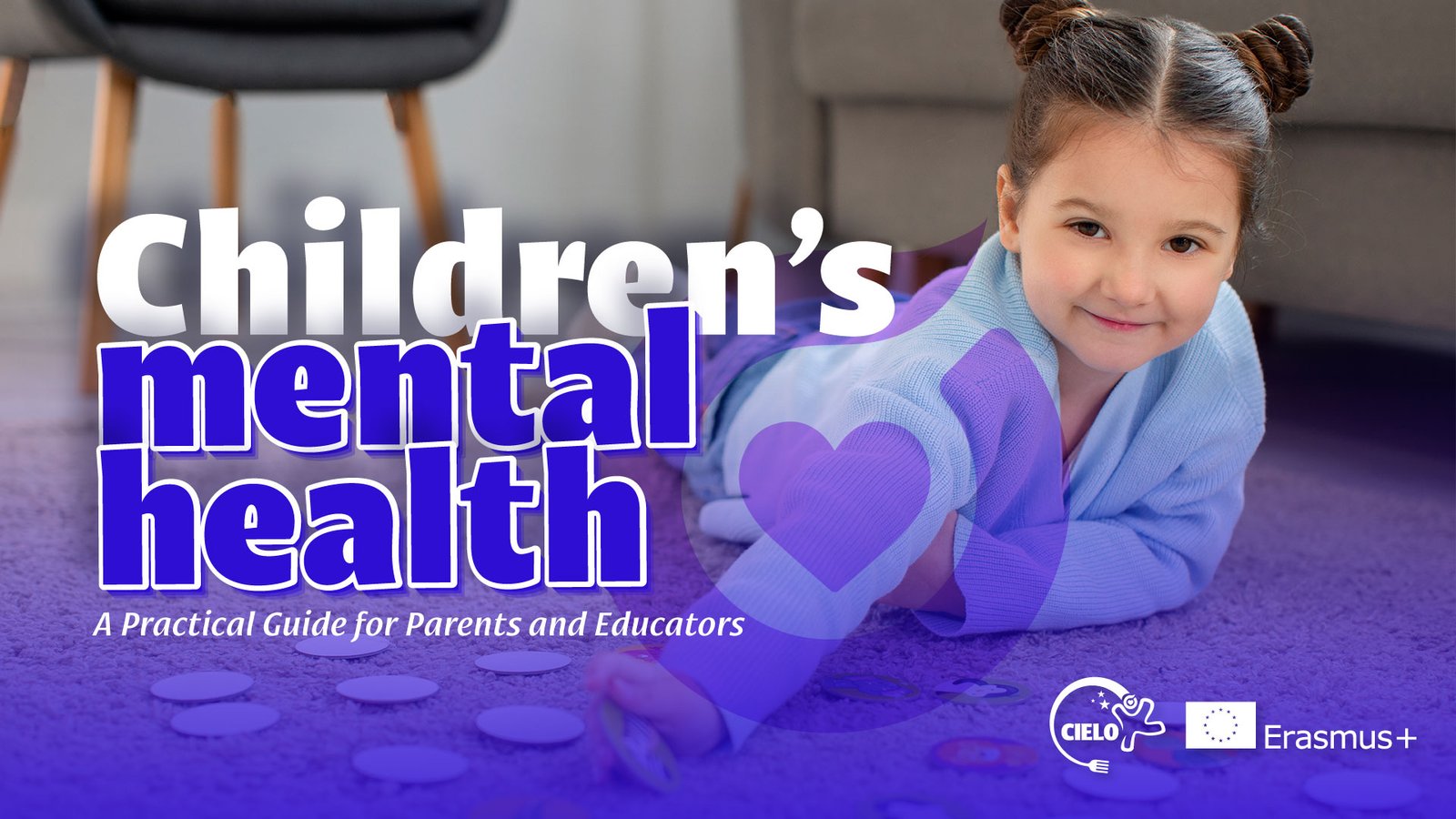Professor Deibem Gómez A, psychologist.
ORCID:0000-0003-0875-2146
Children’s mental health is a fundamental pillar for the overall development of boys and girls. In an era where academic, social, and technological demands are increasingly high, the best interests of the child have become a priority for public and private institutions, as well as for families and educators.
Healthy emotional development during childhood lays the foundation for a balanced adult life. Children with good mental health can express and manage their emotions, create positive relationships, learn effectively, and develop resilience in the face of challenges. However, according to recent studies, approximately one in five children experiences some kind of mental health difficulty, ranging from anxiety and sadness to behavioral issues or attention difficulties (WHO, 2021).
Warning Signs
It is important to pay close attention to these signs:
1. Significant changes in behavior or personality.
2. Trouble sleeping or frequent nightmares.
3. Loss of interest in activities they previously enjoyed.
4. Social withdrawal or isolation.
5. Poor academic performance.
6. Frequent complaints of physical ailments (headaches, stomachaches).
7. Regressive behaviors (bedwetting, baby talk, thumb sucking).
8. Excessive worries or fears.
9. Irritability or frequent tantrums.
Practical Tips for Parents
1. Open Communication
Children need to express what they feel freely, but they won’t do so unless we create regular spaces for communication. Use open-ended questions like “How did you feel at school today?” instead of yes/no questions. Validate their emotions without minimizing them, even if they seem exaggerated (Faber & Mazlish, 2012).
2. Stable Routines
Uncertainty is the enemy of emotional security. It is very important for a child to know and follow their schedule consistently, whether it’s for meals, homework, or bedtime. Clear bedtime routines (bath, reading, prayer, rest) particularly help reduce anxiety.
3. Quality Time
Spend at least 15 minutes a day giving your full attention to each child, following their interests without technological distractions. This “special time” strengthens emotional bonds and improves children’s self-esteem (Pereira Retana, 2012).
4. Clear and Consistent Boundaries
Boundaries are necessary for healthy emotional development. Children must clearly understand the rules and the consequences of not following them. All adults involved in the child’s life (parents, grandparents, caregivers) should be consistent to provide emotional stability and security.
5. Emotional Modeling
Children are like sponges that absorb everything they see. As adults, we must demonstrate healthy ways of handling stress and expressing difficult emotions. Share your own feelings appropriately and show them how you cope.
Recommendations for Educators
1. Safe and Welcoming Environment
Design physical spaces that are organized but stimulating. Include calm zones where children can retreat when they feel overwhelmed, with relaxing sensory items like soft cushions or cozy blankets.
2. Integrated Social-Emotional Education
Dedicate daily time to developing social-emotional skills. Use stories, role-playing, and group activities to teach emotional identification, empathy, and peaceful conflict resolution (Naranjo Pereira, 2014).
3. Pedagogical Flexibility
It’s important to identify different learning preferences and individual educational needs. Every child is different, so we must observe how they progress in their learning journey to make necessary methodological changes that encourage participation and reduce frustration.
4. Effective Communication with Families
Maintain two-way communication with parents. Share the child’s progress and achievements but also raise concerns when necessary. Develop strategies that can be applied both at home and in school to maintain consistency in approach.
5. Positive Reinforcement
Identify and reinforce each student’s efforts and strengths, not just academic results. Specific praise (“I liked how you helped your classmate”) is more effective than generic compliments (Dweck, 2016).
Complementary Strategies
1. Movement and Nature
Regular physical exercise and contact with natural environments significantly reduce anxiety symptoms and improve attention span. Electronic devices are fascinating for most children, but it is important to schedule daily outdoor activities without them.
2. Balanced Nutrition
The link between nutrition and mental health is increasingly evident. Reduce ultra-processed foods and sugars and encourage diets rich in omega-3 fatty acids, fruits, vegetables, and quality proteins (Rucklidge & Kaplan, 2016).
3. Screen Management
Set clear boundaries for electronic device use. Avoid screens at least an hour before bedtime and during family meals. Actively monitor the digital content children consume (AAP, 2016).
4. Mindfulness and Relaxation Techniques
It’s beneficial for children to learn breathing and relaxation techniques from an early age. Teach age-appropriate exercises. Even five minutes a day can significantly improve children’s emotional regulation.
When to Seek Professional Help?
If emotional or behavioral issues persist for more than two weeks, interfere with the child’s daily life, or cause significant distress, it’s time to consult a specialized professional. Early support can prevent greater difficulties in the future (Estado de la Nación Program, 2019).
References
- American Academy of Child and Adolescent Psychiatry [AACAP]. (2021). Cuando buscar ayuda para su hijo. Facts for Families.
- American Academy of Pediatrics [AAP]. (2016). Media and young minds. Pediatrics, 138(5), e20162591.
- Campos Moreira, L., Gómez-Campos, R., Méndez-Cornejo, J., & Cossio-Bolaños, M. (2017). Efecto de la actividad física en el desarrollo motor de niños de la región central de Costa Rica. Revista MHSalud, 14(1), 1-14.
- Dweck, C. S. (2016). Mindset: The new psychology of success (Updated ed.). Random House.
- Faber, A., & Mazlish, E. (2012). How to talk so kids will listen & listen so kids will talk. Scribner.
- Naranjo Pereira, M. L. (2014). Enfoques conductistas, cognitivos y racional-emotivos en la terapia infantil. Revista Costarricense de Psicología, 33(1), 17-35.
- Organización Mundial de la Salud [OMS]. (2021). Salud mental del adolescente. Centro de prensa OMS.
- Pereira Retana, Z. (2012). Los diseños de método mixto en la investigación en educación: Una experiencia concreta. Revista Electrónica Educare, 16(1), 15-29.
- Programa Estado de la Nación. (2019). Séptimo Informe Estado de la Educación. San José, Costa Rica: PEN.
- Rucklidge, J. J., & Kaplan, B. J. (2016). The better brain book. Penguin.














